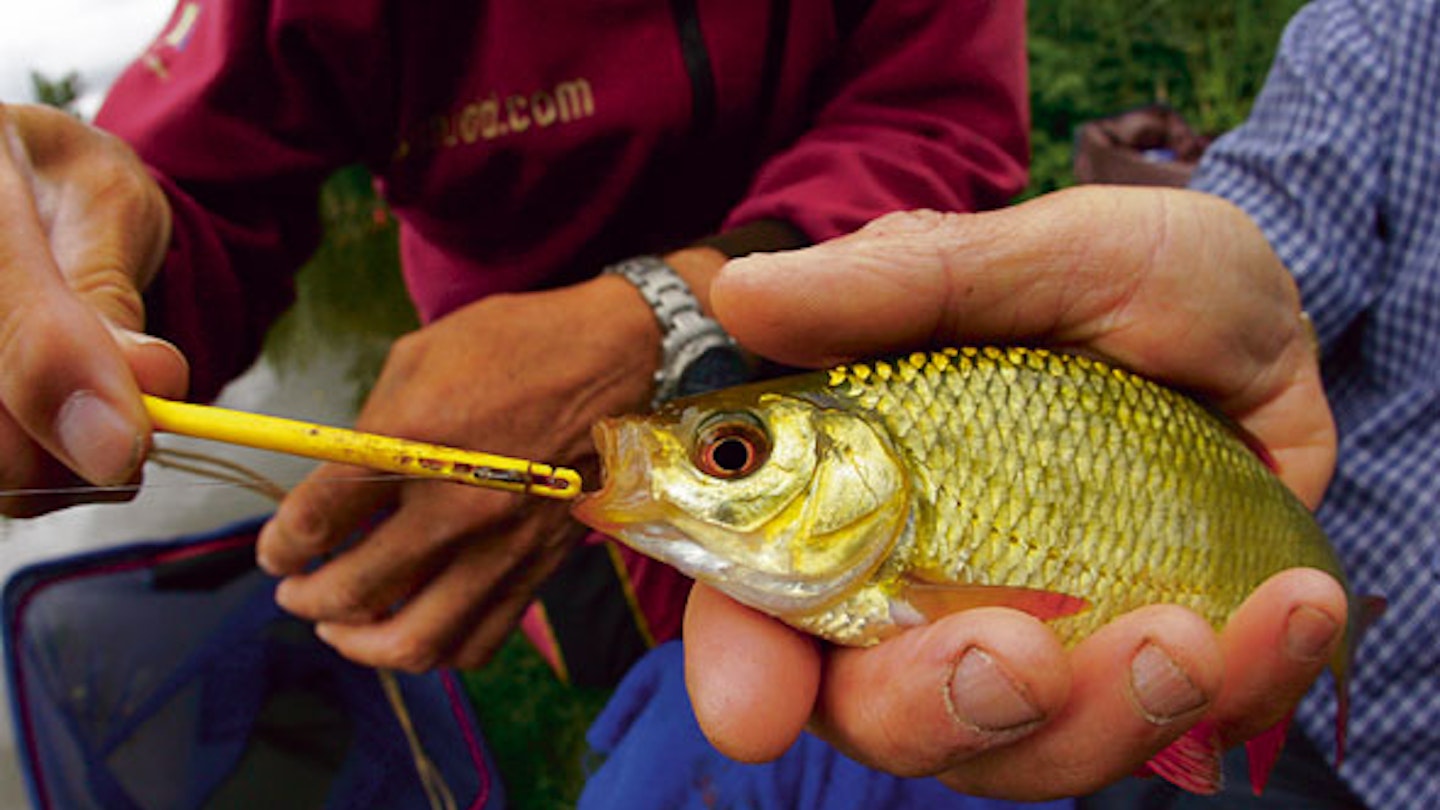Although your hooklength is the weakest point of your fishing rig, it's one of the most crucial parts. How long should it be, how do you attach it and which line should you use? We have the answers...
WHAT IS A HOOKLENGTH?
A hooklength – also referred to as a ‘bottom’ – is a length of line that is nearly always thinner in diameter, and must have a lower breaking strain than the mainline.
The hook is tied to this lighter line and then attached to the thicker, stronger reel line (or rig line if you’re fishing the pole) via a special knot.
WHY USE A HOOKLENGTH?
HOOKLENGTHS serve two important functions. First, If you snag your hook and can’t free it, you’ll be forced to pull the line until it snaps. (This is called pulling for a break.)
When pulling for a break, never attempt to use the curve in your rod or pole to snap the line. You could easily shatter a pole section or damage a rod.
Wrap a rag or towel round your hand so the taught line doesn’t cut you, and pull slowly until it parts. Keep the line low and turn your head away because the float could catapult back and spear you in the face. The line will snap at the lighter breaking strain bottom, so you only lose your hooklength, not the whole rig including the float or feeder you’re fishing with. It also means you don’t leave yards of line in the water to endanger wildlife.
Secondly, a finer diameter hooklength is less likely to be detected by wary fish, especially in clear water.
WHAT BREAKING STRAIN?
AS a general rule, your hooklength should be at least a pound lighter in breaking strain than your mainline.
Many anglers, especially matchmen, now express all their lines – reel/rig lines and hooklengths – in terms of the line’s diameter in millimetres. For example, 0.17mm reel line (roughly 6lb 12oz breaking strain) to 0.15mm (5lb 14oz) hooklength.
In this case, you’re looking for a minimum 0.02mm difference between the reel/rig line and the hooklength.
HOW LONG A HOOKLENGTH?
OPINION differs as to how long a hooklength should be. Some canal anglers use hooklengths as short as four inches. Other anglers fishing slow-sinking baits like maggots and casters on clear water venues, make theirs as long as 30 inches.
If you’re tying your own hooks, a 12-inch hooklength is a good place to start. (Many pre-tied hooks to nylon are this length.)
Make sure you tie all your hooklengths the same length. This way, if you snap a hooklink and tie on another, or simply want to change to a bigger or smaller hook, you’ll still be fishing at exactly the same depth.
One good tip is not to nip dropper shot on fine diameter hooklengths if you can help it. Even legal lead split shot (size 8 or less) can damage and weaken fine lines.
WHAT LINES TO USE
IN summer, strong, stretchy and clear monofilament lines are best. When the colour drops out of water in winter, try fishing a fluorocarbon line.
Fluorocarbons are far less visible in water, but they’re more expensive to buy, and can be heavier, more brittle and wiry than monos.
WITH OR WITHOUT A LOOP?
THE best way to attach a hooklength is the loopto- loop method shown (below).
Tying the loops correctly is essential. If you just tie a granny knot, the loops can pull apart under pressure or part under sudden impact pressure – such as when striking into a fish.
The strongest loop by far is the figure of eight loop. The knot used to tie the figure of eight is 60% stronger than any other – and it’s simple to tie.
.jpg?auto=format&w=1440&q=80)
.jpg?auto=format&w=1440&q=80)
- Grip the mainline between thumb and finger and then pass the mainline loop through the centre of the hooklength loop
- The hooklength loop is now on the left so you need to pass the actual hook back through the mainline loop (right)
.jpg?auto=format&w=1440&q=80)
.jpg?auto=format&w=1440&q=80)
- At this stage wet the loops in your mouth and gently pull the them together. The knot MUST look like this for full strength
- If it looks like this, you have a lark’s tail knot which is up to 60% weaker than the correct loop-to-loop connection
HOW DO YOU CONNECT HOOKLENGTH TO MAINLINE?
Once you’ve tied figure of eight loops in your reel/rig line and your hooklength, follow the sequence below.
If you connect the loops the wrong way, you’ll end up with a lark’s tail knot – which is extremely weak, and could snap when you’re playing a big fish. Never use this knot!
If you’re unsure how to tie a figure of eight loop use a loop tier sold by tackle shops. The one shown is a Sensas model and costs £4.99 for a twin pack.
.jpg?auto=format&w=1440&q=80)
t1.jpg
.jpg?auto=format&w=1440&q=80)
- You will need a loop on both mainline and hooklength. First, fold 10cm of your line back on itself like this
- Put the neck of the loop tier so that it captures both strands of line and pull it tight as shown
.jpg?auto=format&w=1440&q=80)
.jpg?auto=format&w=1440&q=80)
- Rotate the head of the hook tier twice to twizzle the line. Then put the loop over the head of the tier and into the open ‘jaw’
- Pull the line tigh to snug down the knot and then simply remove it from the ‘jaws’ and trim off the tag end neatly
